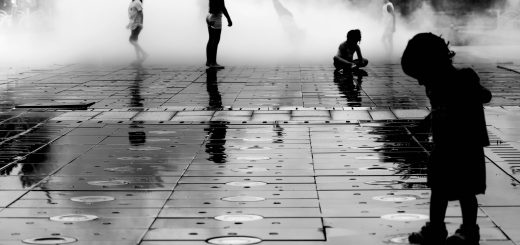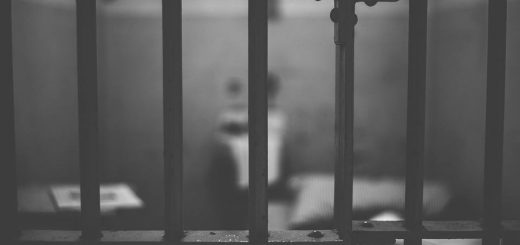Book Review: Peace and Good Order

Peace and Good Order: The Case for Indigenous Justice in Canada
by Harold R. Johnson
McClelland & Stewart, 160 pages, $24.75
Peace and Good Order is part autobiographical tale of Harold R. Johnson’s life as an Indigenous Crown prosecutor and part scathing indictment of Canada’s criminal justice system. It is a timely and provocative read about the frustrating absence of meaningful reconciliation, the moral complexities of criminal law, and the havoc it can wreak on entire communities.
Johnson’s book begins with a moment of reflection triggered by hearing the verdict delivered in the Gerald Stanley homicide trial over the radio. Gerald Stanley, was acquitted on February 9, 2018 of the killing of Colten Boushie, a 22-year old Indigenous man on his Saskatchewan farm. His first response, having retired from his career in law, was to shut down and hide in his cabin, so he would be least troubled by it (Johnson, 2). Despite Johnson’s best efforts, a text from a retired Saskatchewan provincial judge grieving the decision, caused him to ruminate upon his life and career as a defense counsel and later Crown prosecutor in Northern Saskatchewan (Johnson, 3). The remainder of the book is an account of Johnson’s career, starting from law school and recounts what he sees as the many failures of the justice system.
Johnson’s meditations are most provocative when he reflects on the failure of the legal profession to bring about reconciliation. In particular, early in Peace and Good Order, Johnson delivers a devastating critique of law schools as institutions and the role they play in the legal profession. He views law school as an artificial barrier which keeps Indigenous peoples and other disadvantaged people out of the profession. Johnson writes: “Law school is not the bridge into the profession. It’s the gate. It is there to keep people out” (Johnson, 24). The subject of law itself is not difficult or exclusive. Rather it is law schools: the 100 percent finals, the lack of social supports and the high tuition, which keeps disadvantaged people out (Johnson, 27).
The problem is not only that law schools keep disadvantaged people out of the legal profession. Even when it lets people in, it teaches students to adopt heterogenous western European values. To this end, Johnson does not think increased representation of Indigenous peoples in the legal profession would promote reconciliation. He argues: “One of the solutions proposed to improve the condition of Indigenous people within the justice system is to increase the number of Indigenous lawyers and judges. But my experience suggests I didn’t change the system; it changed me” (Johnson, 39). Johnson expresses skepticism that more Indigenous legal professionals would promote reconciliation, when it is the legal profession and the western European values that it embodies that are the real problem.
Despite Johnson’s overly pessimistic perspective on the role law schools play in reconciliation, his critique is still valuable. It accurately points out that law school is inaccessible to many Canadians. Law schools today remain prohibitively expensive and artificially difficult. Much of the hardship in law school comes not from the subject matter, but from the way students are evaluated, how they are recruited for jobs, and the licensing process. The critique also provocatively questions if increased diversity in the profession would lead to social change in an ideologically heterogenous profession. This is especially worth considering given that there has been much discussion about the eventual appointment of an Indigenous person on the Supreme Court bench. It is difficult to imagine that disputes about the importance and urgency of making the profession more accessible and diverse will go away anytime soon.
Peace and Good Order is at its best when it becomes a poignant contemplation about the moral complexities of practicing criminal law. Despite having practiced law for twenty years, Johnson regrets that he worked in the justice system (Johnson, 25). When he was a prosecutor, he used to tell himself that he was not so much prosecuting Indigenous people, but protecting his community and Indigenous victims (Johnson, 51). He thought that jail was necessary to achieve peace in the community by separating offenders from victims (Johnson, 51). Johnson now believes that all incarceration does is severely traumatize often unwell offenders and then release them back into the community without the skills to manage. In effect, incarceration is not a solution to crime, but a stopgap (Johnson, 53). Similarly, Johnson now feels that when he worked as defense counsel he perpetuated suffering by acting as counsel for repeat offenders. He did not help offenders stay out of the justice system nor did he help his community (Johnson, 50). Johnson’s perspective on the criminal justice system, again, is characteristically negative, but worth considering given his candour and honesty, which otherwise is seldom heard.
The most intriguing suggestion Johnson has for reforming criminal law is replacing deterrence as a principle of sentencing with redemption. Section 718 of the Criminal Code, RSC 1985, c C-46 expresses principles that courts must consider when sentencing a convicted offender. One of such principles is to deter the offender from reoffending, and to deter others who might consider committing that offence in the future. He thinks that deterrence has never worked and would rather see it replaced with a principle of redemption. Johnson sees redemption as having two components. The first would be to make the community and victim whole again. This would involve an apology followed by service to the community. The service would be based on what the community and victim suggest to the prosecutor as necessary to make things right (Johnson, 133). The second part would involve some sort of rehabilitation (Johnson, 133). The theory is that the offender would earn his way back into the community through his contributions. The goal is that this would foster pride and dignity (Johnson, 133). Johnson’s idea is to reorient sentencing away from legal professionals, and give that power to the victim, community, and offender (Johnson, 134).
Although Johnson’s law reform idea raises many questions, it is thought-provoking. It is not clear in this plan what would happen if a victim and community preferred incarceration to service. The idea problematically presumes the desire of the community and victim to be involved. That is not a given. Johnson does not say whether the principle of parity, namely that similar sentences should be received in similar circumstances, would even apply since in his model, the community decides. Despite those challenges, the notion of placing some sentencing decisions for certain offences in the hands of the community does make some sense. If the community and victim were to author the sentence, they would be more satisfied by the result and have greater faith in the administration of justice. In some circumstances this may also make the punishment more meaningful to the offender because it is coming from the community and the victim.
Despite offering some creative ideas, Peace and Good Order is not worth reading as a text on law reform. The way Johnson analyzes problems and provides solutions, is not sweeping or systematic in the way that the best academic treatises are. However, Peace and Good Order occupies a space all of its own. It is an autobiography and a sustained provocative argument for societal change. It offers an intimate view of the impact of criminal law on Northern Saskatchewan Indigenous communities and is mercilessly candid in its depiction of contemporary criminal law practice, which you might otherwise never get to read about.








Join the conversation